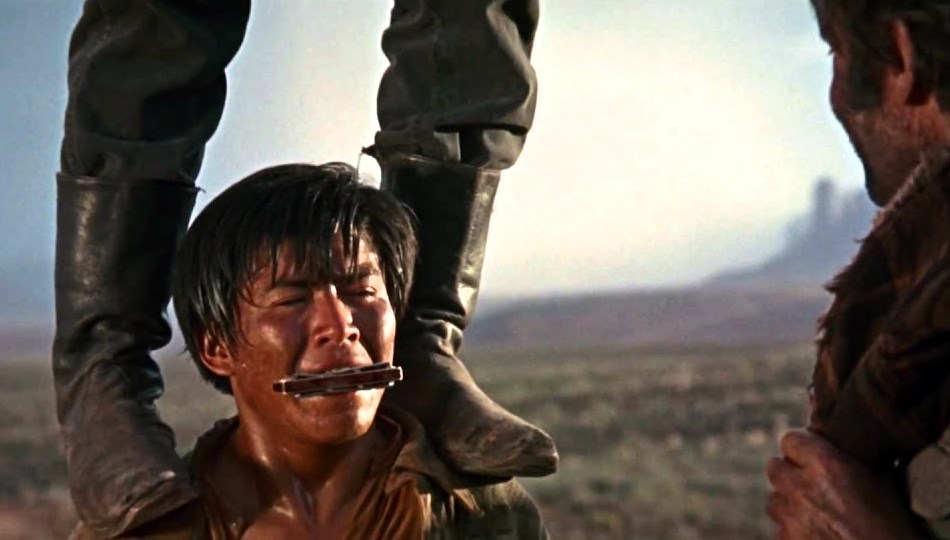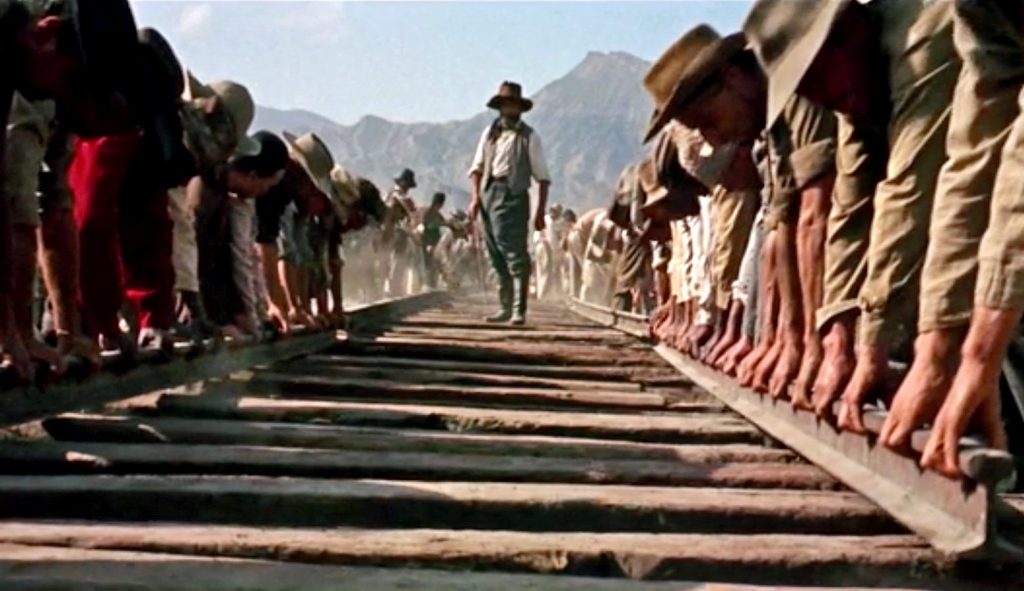
Sergio Leone often goes for pure visual storytelling without dialogue, but everything indeed is a sophisticated puzzle piece. At the time in 1969, Once Upon a Time in the West was thought of as an overblown western with a thin plot if you could believe it. Possibly thought of as thin only because the first hour sets up mood and scant circumstance instead of hurling expository plot information at us all at once; we’re clouded in mystery as to the characters’ wants but it is parceled out prudently. Patience, people, patience! The people who complained are likely the same people that complained during “2001: A Space Odyssey” that there was too much Blue Danube music and not enough explanation going on.
In the shortest summary, Henry Fonda is wickedly unparalleled in the bad guy role, Charles Bronson is the laconic hero seeking obscure revenge, and Claudia Cardinale is the beauty just trying to stake a reasonable life that’s worth living. But, let’s come now, just how infinitely superior is Once Upon a Time in the West over virtually every other western?
After decades of westerns that had characters with cliched goals and short sights on life, here came Sergio Leone’s spellbinding epic with characters who had dreams and vision.
The McBain family is slaughtered in the opening section of the film, leaving Jill (Cardinale) a widow. Turns out the McCain land is preferred real estate; a train depot is to be built for the incoming railroad. There is something of a frozen in time shot later on when the railroad baron Morton (Gabriele Ferzetti) stares at a coastal painting and hears the ocean waves. We know he wants that train depot, that land to himself, and to retire serenely on the California coast on land removed from any potential violence.
Yet Morton hires the very violent and implacable Frank (Fonda) to do some dirty work so he can scoop up land unchallenged. Meanwhile, Bandit Cheyenne (Jason Robards) has been falsely accused of the McCain family massacre and wants to clear his name.
But everybody, even if desires are held close to the chest, wants something life-changing, something consummate in their end goal. Once Upon a Time in the West is a story larger than virtually all, told on Sergio Leone’s ever-widening canvas, to the point it makes others look like child’s play. It is fully awake art that knows what’s really at stake in the world.
This had followed Sergio Leone’s own “The Good, the Bad and the Ugly” which came at the time in 1969 when an entirely new rhythm was being created by Leone, with tastes of the spaghetti western and epic form and elegy and pipe dream all coalescing together, that squashed all those one-note westerns that came before. These manifold elements are all lofted by Ennio Morricone’s music, based initially on Bronson’s harmonica, and transfigured into a rapturous and sublime main theme that is enlightened and swelling and beautiful.

Only three westerns ever made, to me, are worthy of being referred to as spellbinding. If you’re asking me, this was the first spellbinding western that had come, and it paved the way for more divergent storytelling in the 1970’s.
165 Minutes. Unrated.
WESTERN / ADULT ORIENTATION / MASTERPIECE VIEWING
Film Cousins: “A Fistful of Dollars” (1964); “Duck, You Sucker!” (1971); “McCabe & Mrs. Miller” (1971); “Once Upon a Time in America” (1984).





